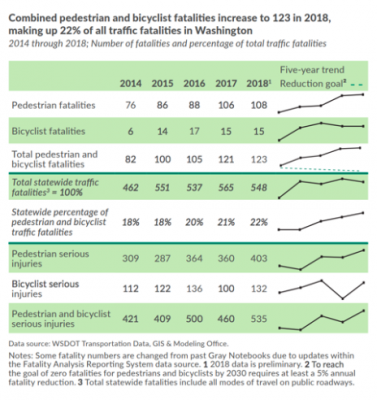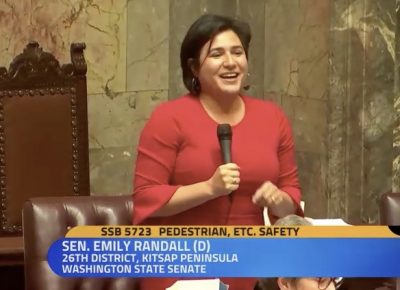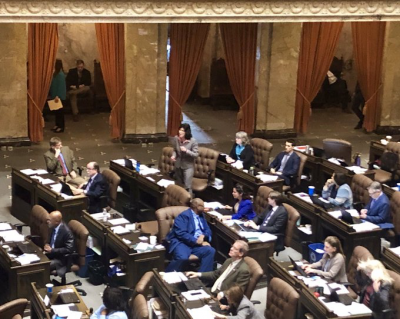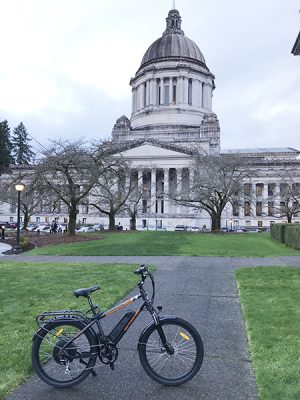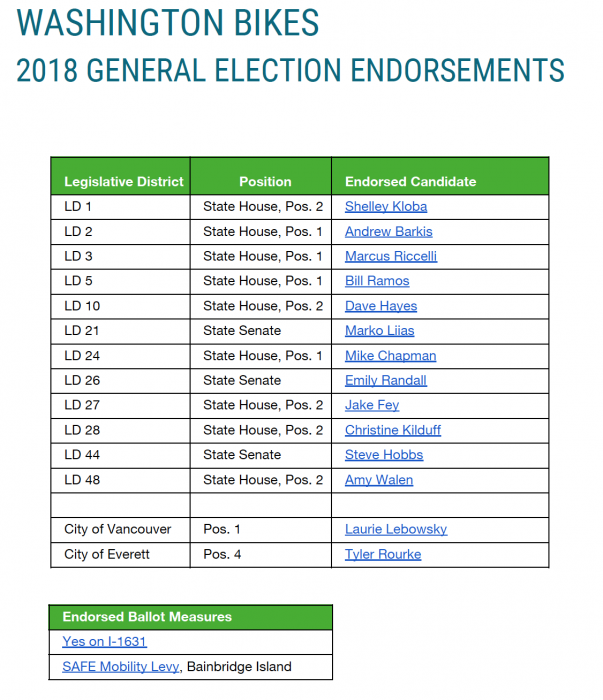The 105-day legislative session adjourned on time Sunday April 28th, here’s what Washington Bikes accomplished
The 2019 legislative session was a fast-paced and intense 105 days, but we successfully achieved Washington Bikes’ entire 2019 legislative agenda – ensuring investments in trails, sidewalks and bikeways, and establishing policies that improve safety for people who bike.
Before diving into the specifics of successes this session, it’s worth noting that this year was only the second time since 1980 that the legislature adjourned it’s “long session” (where the biennial budget is passed) on time.
With Democrats in control of the State House, Senate, and the Governor’s office, they worked to pass some unprecedented policy changes. But differences between the chambers on budget proposals – both what is funded, what revenue was viable to fund those proposals, and the position on some of the bills necessary to implement the budget – meant it wasn’t clear until the final minutes that they would actually adjourn on time.
Washington Bikes 2019 legislative agenda – here’s what happened!
Vulnerable user/Safe passing legislation
Washington Bikes led efforts to pass legislation to strengthen the rights of people bicycling, walking and other types of vulnerable roadway users. At its core, the Vulnerable user/Safe passing legislation does two things:
- Increases the penalty for specific infractions involving people biking, walking, rolling, etc. (The increased fine will go towards education of law enforcement, the courts and the public regarding safe interactions with people who are vulnerable on the roadway. For more detail on what’s included in the new law, see here.)
- Establishes a strengthened safe passing law (give a lane or provide at least three feet)
The vulnerable road user and safe passing bill passed the legislature with bipartisan support! The bill is awaiting signature by the Governor. Huge thanks to prime sponsors of the legislation Sen. Emily Randall (26th LD, Bremerton) and Rep. Christine Kilduff (28th LD, University Place) for their leadership and work throughout the session.
Growing investments in connected and safe infrastructure for people who bike & walk
Washington Bikes worked to secure funding for bicycling improvements, via the multimodal account and bike/pedestrian grant programs. The multimodal account dedicates funds for transportation for rail, ferries, transit, biking and walking. Multimodal account investments for biking and walking include the bicycle and pedestrian grant program and project list and the Safe Routes to School grant program.
Sen. Hobbs (44th LD, Lake Stevens) introduced a transportation revenue package which maintained the same level of investment for active transportation as the 2015 transportation revenue package and included a sales and use tax on new bicycles as part of the revenue proposal. The package did not move forward this year, but it did provide an opportunity to begin educating legislators as to why there is an even greater need for increased investment in active transportation and why taxing a form of transportation and recreation that we want more people to choose is counter intuitive.
The $41 million currently budgeted for SRTS and the bike and pedestrian grant program in the 2019-2021 biennium leaves over 200 applications unfunded statewide. These unfunded projects represent $146 million, close to half of the entire bike/ped and SRTS funding in the 2015 package at $306 million. Washington Bikes looks forward to continuing the work towards increased investments for people who bike in Washington’s next transportation revenue package.
Protecting and connecting trails statewide
Trails form a backbone of many of the biking and walking networks statewide. Washington Bikes, along with our trail advocate partners, worked to ensure the investments detailed below were secured for the development and maintenance of trails throughout Washington.
- $5.7 million at the Department of Archaeology & Historic Preservation to protect and rehabilitate the Beverly Bridge a key connection along the Palouse to Cascades Trail. (Capital budget)
- $85 million for the WWRP, which go towards improving outdoor recreation opportunities, trail development and enhancing state parks. The original ask was $180 million. (Capital budget)
- Two additional projects along the Palouse to Cascades Trail are funded on the WWRP list. New this year is a requirement that a mediation process be convened to address ownership, development and use conflicts along the Palouse to Cascades Trail in Adams and Whitman counties in order for the Malden to Rosalia project funding to be released.
Support for the creation of the Active Transportation Safety Advisory Committee
Washington Bikes worked alongside active transportation advocates to pass legislation to merge the Cooper Jones Bicyclist Safety Advisory Committee and the Pedestrian Safety Advisory Committee forming the Active Transportation Safety Advisory Committee (ATSAC). The bill passed the legislature and has been signed into law! The ATSAC will be convened by Washington Traffic Safety Commission and comprised of stakeholders who have an expertise connected to bicycle and pedestrian street safety. The Council will analyze data related to bicycle and pedestrian fatalities and serious injuries and then identify vulnerabilities in the system and recommend improvements.
Of note, some legislators were supportive of including a sunset date for the ATSAC. But ultimately the bill was passed without a sunset date, so the work of the Council will be ongoing. An amendment by Sen. Sheldon (35th LD, Potlatch) was introduced while the bill was before the Senate Transportation committee, it is included in the final bill and strengthens the bill by requiring WTSC to also gather crash data on private property (i.e. in a parking lot) for consideration by the Council.
It was a productive legislative session. The team at Washington Bikes is thrilled we were able to help create safer streets, increase protections for people who bike, and connect and grow bicycle and trail networks throughout Washington state.
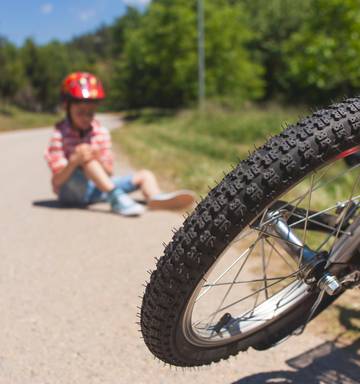

 Claudia Balducci
Claudia Balducci


